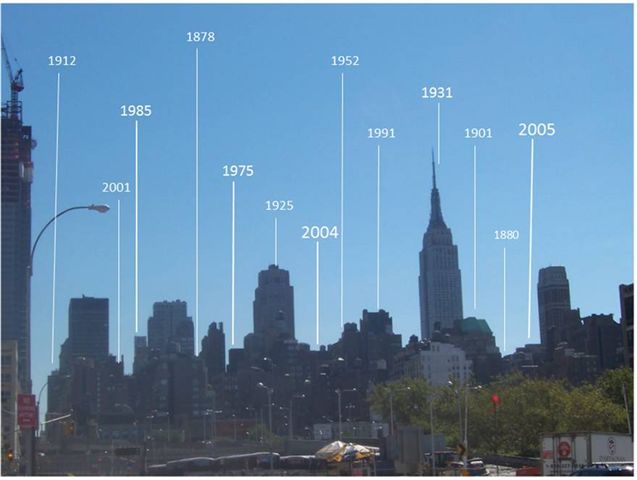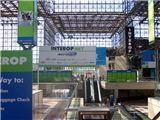Interop NYC
by jcannon on October 02, 2006 06:06pm
Last week, I was fortunate to take a day & visit the floor of Interop New York. The Interop conference celebrated its 20th anniversary this year, underscoring the persistence & complexity of interoperability as an industry issue. This year’s mission was no different…to discuss achieving the ideal state of all technology talking to itself, and to others.
OK, so here’s the clever metaphor I came up with on my walk over to the Javitz Center (I live in NYC – anyone around….let me know). Interoperability is a loaded term since it can mean so many different things to different folks …but why? Because interop is really more about many means toward an end. In fact, I would suggest the goal of most interoperability efforts is to enhance the performance of a total system through improved communication and accessibility of the various subsystems – be that protocols, applications, schemas or operating systems (the means). It’s kind of like…..a city! The below pick was snapped on my way over to the show....the total system of a city only works when it’s subcomponents work together successfully – be they water, electric, gas, subway, building specs & zoning, urban development & layout, garbage, sewer, security, transit. All of those systems must talk to themselves and to each other to provide a quality of service to the citizens it serves. I skillfully Photoshop’d the below to illustrate my point….if you live or have visited NYC, you know that it’s amazing that the system works so well, every single day. We grumble that interop in IT is hard to achieve with legacy systems 5, 10, 20 years old. Imagine connecting systems dating back to Gangs of New York. Absolutely nuts.

Pretty Complex Stuff (PCS)
The Show
More than anything, it was fascinating to hear how customers & vendors are defining interoperability. The pervasive definition was squarely on technology and the increasing role of (here comes the buzz-train) Web 2.0 in connecting data, information and systems. This was reflected in the keynotes, such as Andrew McAfee and SocialText CEO, Ross Mayfield’s presentation. I’ll start by breaking that notion down into a couple more discrete ideas:
The Browser as Epoxy
This was the most interesting theme of all ~ across both IT and Developer tracks, interoperability was a problem best addressed by the browser. I phrase it this way because at its most basic level, the browser, through robust XML frameworks and rich presentation layers, is what is bringing disparate data and systems together in a seamless way for enterprise end-users. That quality of adhesiveness is being enabled by technology like AJAX and DHTML – not surprisingly - and subsequently one arrives at ‘Rich Internet Applications.’ What was interesting to me was that interoperability solutions weren’t being implemented over wires to connect servers. Instead, silo’d data was being fed to powerful client machines for cohesion. In essence, the browser was the epoxy for the data & systems throughout the network. Cool stuff indeed.
The (Dubious) Optimism of Enterprise User-Collaboration
The keynote on Thursday was dedicated to examining how social software conventions (Wikis, Tagging, RSS) can & should be extended into the enterprise environment. In contrast to the process orientation of most enterprise-level applications, Andrew McAfee, Harvard Business School, pointed out that there was much to gain through large scale, unstructured data sharing in an enterprise & the subsequent emergent analysis that could be leveraged as a learning system. What makes all this possible? The very cool technologies of Web 2.0: Deep Linking, Search, Tagging, RSS, Easy Authoring.
Why dubious? Only the largest sites on the Internet are proof points of success: Digg, Delicious, Technorati….we have no idea how to bridge legacy systems to a new generation of tools in an enterprise, nor the required tipping point at which critical mass is reached and emergent patterns actually become meaningful. (How useful is this really for a small/medium/large organization?) And control. Users tend to be untrusted, unsupervised, distributed, silo’d and working in environments under great rates of change – how does a manager leverage a system like this?
Can I Get a Customer?
There were a ton of great demonstrations and eye candy, but I was hard pressed to find a customer talking about a successful interop implementation using most or all of the above technologies. This indicated – to me- we’re still in the early hype cycle of these technologies and lack a customer base and the watered-down expectations that accompany real-world implementation.
Adult Visual Aides; Server Racks & The Show Entrance


- More Photos from Interop (eWeek)
It was absolutely worth the day – although I would have liked to have seen more customers on-site. Can’t blame anybody given it was the last day of the conference though. Did you attend the show, or have any questions about it? Share your thoughts; I would love to hear other perspectives on the themes that were presented.
- Jamie